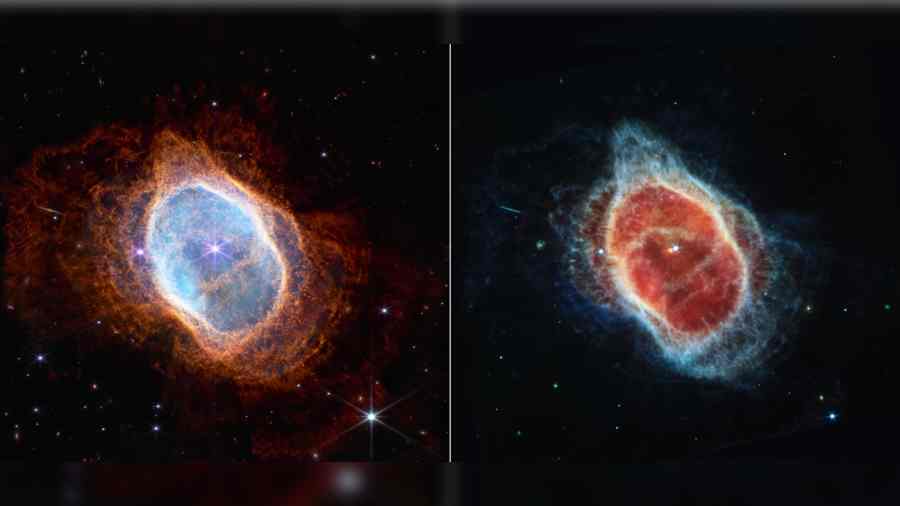From the White House on Monday, humanity got its first glimpse of what the observatory in space has been seeing: a cluster of early galaxies.
In a brief event at the White House on Monday evening, President Biden unveiled an image that Nasa and astronomers hailed as the deepest view yet into our universe’s past.
The image, taken by the James Webb Space Telescope — the largest space telescope ever built — showed a distant patch of sky in which fledgling galaxies were burning their way into visibility just 600 million years after the Big Bang.
“This is the oldest documented light in the history of the universe from 13 billion — let me say that again, 13 billion — years ago,” Biden said. The President, who apologised for beginning the event tardily, praised Nasa for its work that enabled the telescope and the imagery it will produce.
“We can see possibilities no one has ever seen before,” Biden said. “We can go places no one has ever gone before.”
For Biden, the reveal of the images was also a chance to engage directly with an event that will almost certainly stir wonder and pride among Americans — at a time when his approval ratings have plummeted as voters recoil at high food and gasoline prices and Democrats question his ability to fight for gun control and abortion rights.
In a setting in the White House’s South Auditorium that evoked scenes from the bridge of a starship on Star Trek Biden and Vice-President Kamala Harris were joined by Alondra Nelson, the acting director of the White House Office of Science and Technology Policy; Bill Nelson, the former Florida senator appointed Nasa administrator by Biden; and Jane Rigby, an operations project scientist for the Webb telescope. Each sat at small, widely spaced desks in front of a large screen where other Nasa officials appeared. The screen gave way to the cosmic image, which was speckled with tiny dots of galaxies and drew applause from the far end of the room.
Nelson, the Nasa chief, touted the telescope’s scientific potential at the White House event.
“We are going to be able to answer questions that we don’t even know what the questions are yet,” he said. When he added that the technology could determine whether other planets were habitable, Biden responded with a “Whoa”.
As the ceremony ended, Biden was heard saying, “I wonder what the press are like in those other places.”
One of the most ambitious of the Webb telescope’s missions is to study some of the first stars and galaxies that lit up the universe soon after the Big Bang 14 billion years ago. Although Monday’s snapshot might not have reached that far, it proved the principle of the technique and hinted at what more is to come from the telescope’s scientific instruments, which astronomers have waited decades to bring online.
As the telescope “gathers more data in the coming years, we will see out to the edge of the Universe like never before”, said Priyamvada Natarajan, of Yale University, an expert on black holes and primeval galaxies, in an email from India.
The image goes by the name of SMACS 0723. It is a patch of sky visible from the Southern Hemisphere on Earth and is often visited by Hubble and other telescopes in search of the deep past. It includes a massive cluster of galaxies about four billion light-years away that astronomers use as a kind of cosmic telescope.
The cluster’s enormous gravitation field acts as a lens, warping and magnifying the light from galaxies behind it that would otherwise be too faint and far away to see.
New York Times News Service











